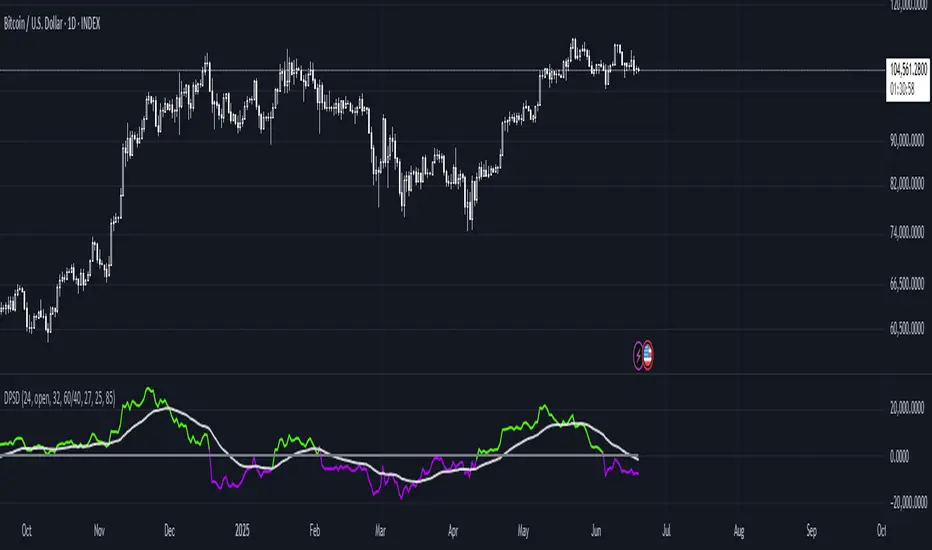OPEN-SOURCE SCRIPT
Updated Dema Percentile Standard Deviation

Dema Percentile Standard Deviation
The Dema Percentile Standard Deviation indicator is a robust tool designed to identify and follow trends in financial markets.
How it works?
This code is straightforward and simple:
Settings
Features
Fully Customizable
Indicator on Diffrent Assets
INDEX:BTCUSD 1D Chart (6 high 56 27 60/45 14)

CRYPTO:SOLUSD 1D Chart (24 open 31 20 60/40 14)

CRYPTO:RUNEUSD 1D Chart (10 close 56 14 60/40 14)

Remember no indicator would on all assets with default setting so FAFO with setting to get your desired signal.
The Dema Percentile Standard Deviation indicator is a robust tool designed to identify and follow trends in financial markets.
How it works?
This code is straightforward and simple:
- The price is smoothed using a DEMA (Double Exponential Moving Average).
- Percentiles are then calculated on that DEMA.
- When the closing price is below the lower percentile, it signals a potential short.
- When the closing price is above the upper percentile and the Standard Deviation of the lower percentile, it signals a potential long.
Settings
- Dema/Percentile/SD/EMA Length's: Defines the period over which calculations are made.
- Dema Source: The source of the price data used in calculations.
- Percentiles: Selects the type of percentile used in calculations (options include 60/40, 60/45, 55/40, 55/45). In these settings, 60 and 55 determine percentile for long signals, while 45 and 40 determine percentile for short signals.
Features
Fully Customizable
- Fully Customizable: Customize colors to display for long/short signals.
- Display Options: Choose to show long/short signals as a background color, as a line on price action, or as trend momentum in a separate window.
- EMA for Confluence: An EMA can be used for early entries/exits for added signal confirmation, but it may introduce noise—use with caution!
- Built-in Alerts.
Indicator on Diffrent Assets
INDEX:BTCUSD 1D Chart (6 high 56 27 60/45 14)
CRYPTO:SOLUSD 1D Chart (24 open 31 20 60/40 14)
CRYPTO:RUNEUSD 1D Chart (10 close 56 14 60/40 14)
Remember no indicator would on all assets with default setting so FAFO with setting to get your desired signal.
Release Notes
-Updated to PineScript 6Release Notes
-Added Option to Use Ema when detecting trendRelease Notes
-Fixed Bug with Plot/AlertsRelease Notes
- Default setting updated to more universal one's- Slight Ui change
Open-source script
In true TradingView spirit, the creator of this script has made it open-source, so that traders can review and verify its functionality. Kudos to the author! While you can use it for free, remember that republishing the code is subject to our House Rules.
Disclaimer
The information and publications are not meant to be, and do not constitute, financial, investment, trading, or other types of advice or recommendations supplied or endorsed by TradingView. Read more in the Terms of Use.
Open-source script
In true TradingView spirit, the creator of this script has made it open-source, so that traders can review and verify its functionality. Kudos to the author! While you can use it for free, remember that republishing the code is subject to our House Rules.
Disclaimer
The information and publications are not meant to be, and do not constitute, financial, investment, trading, or other types of advice or recommendations supplied or endorsed by TradingView. Read more in the Terms of Use.